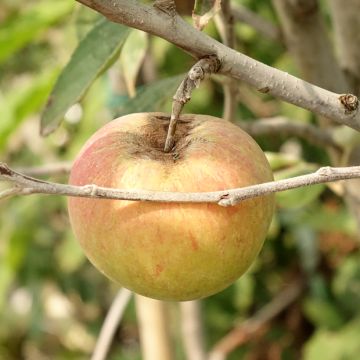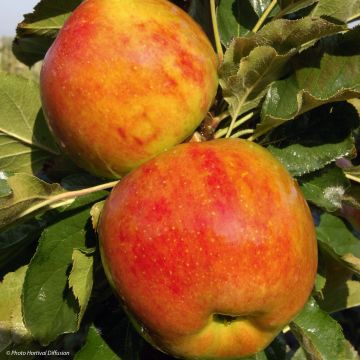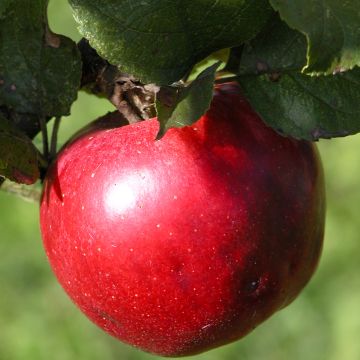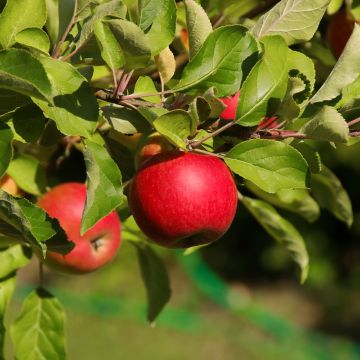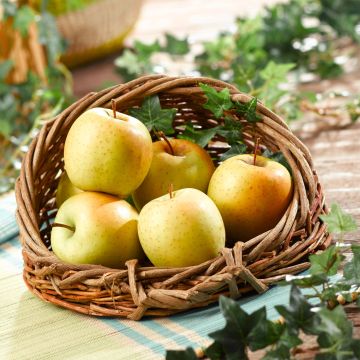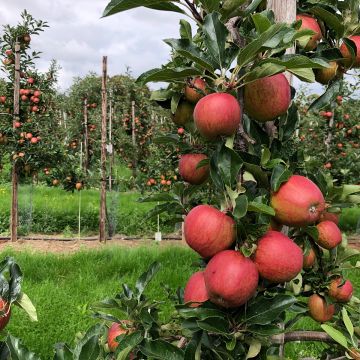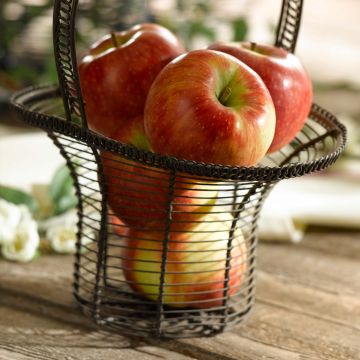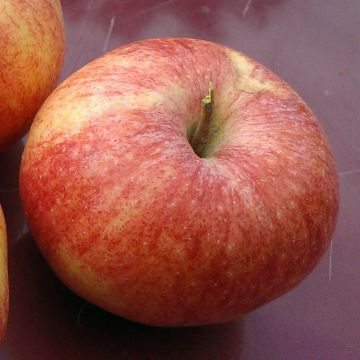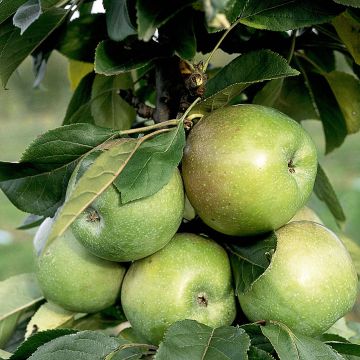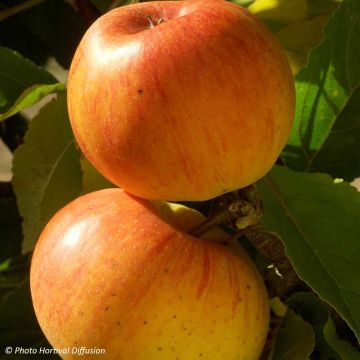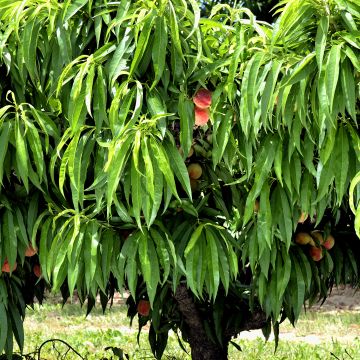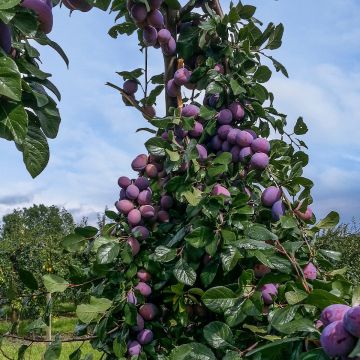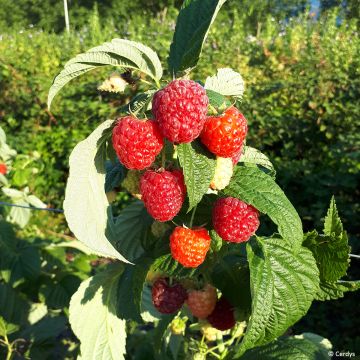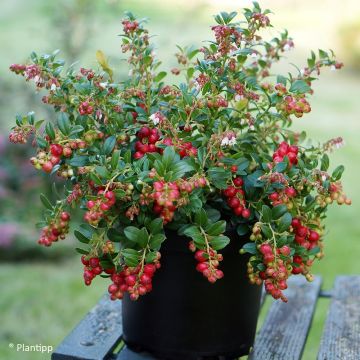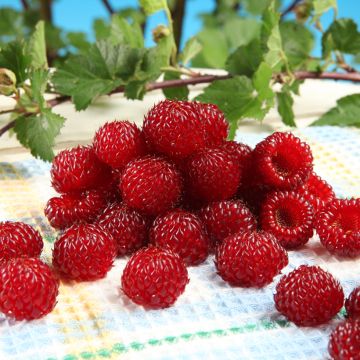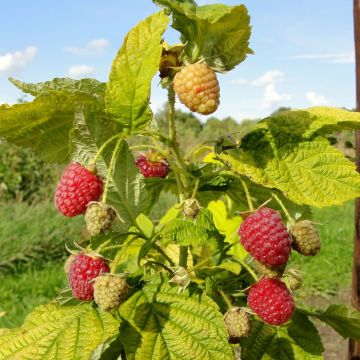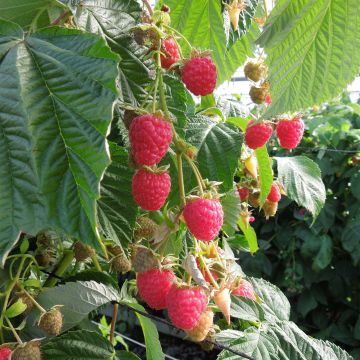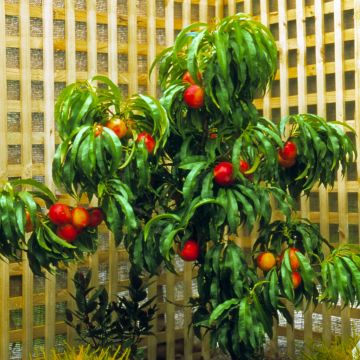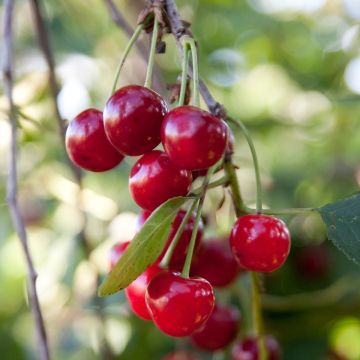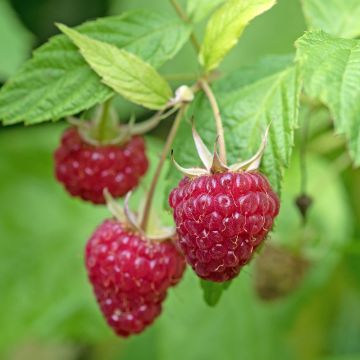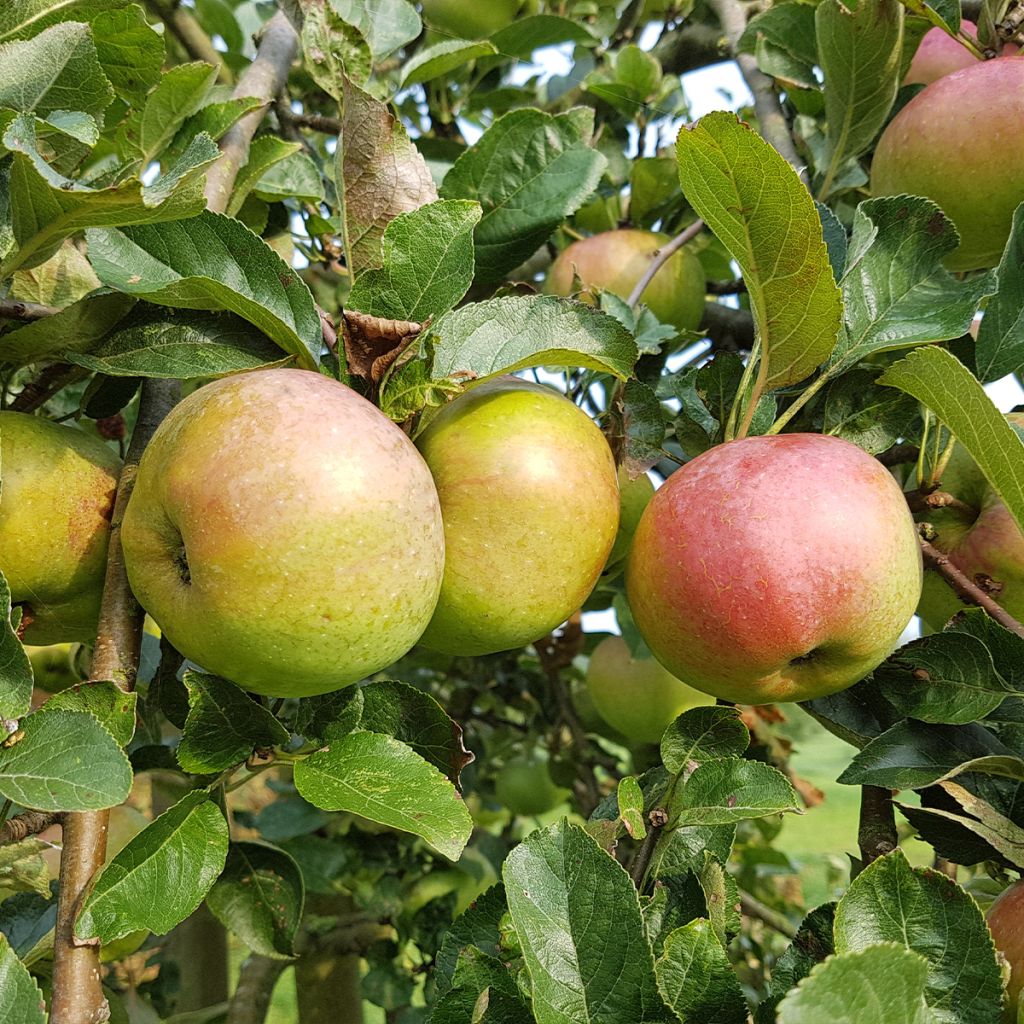

Columnar Apple Tree Azay-Le-Rideau - Malus domestica
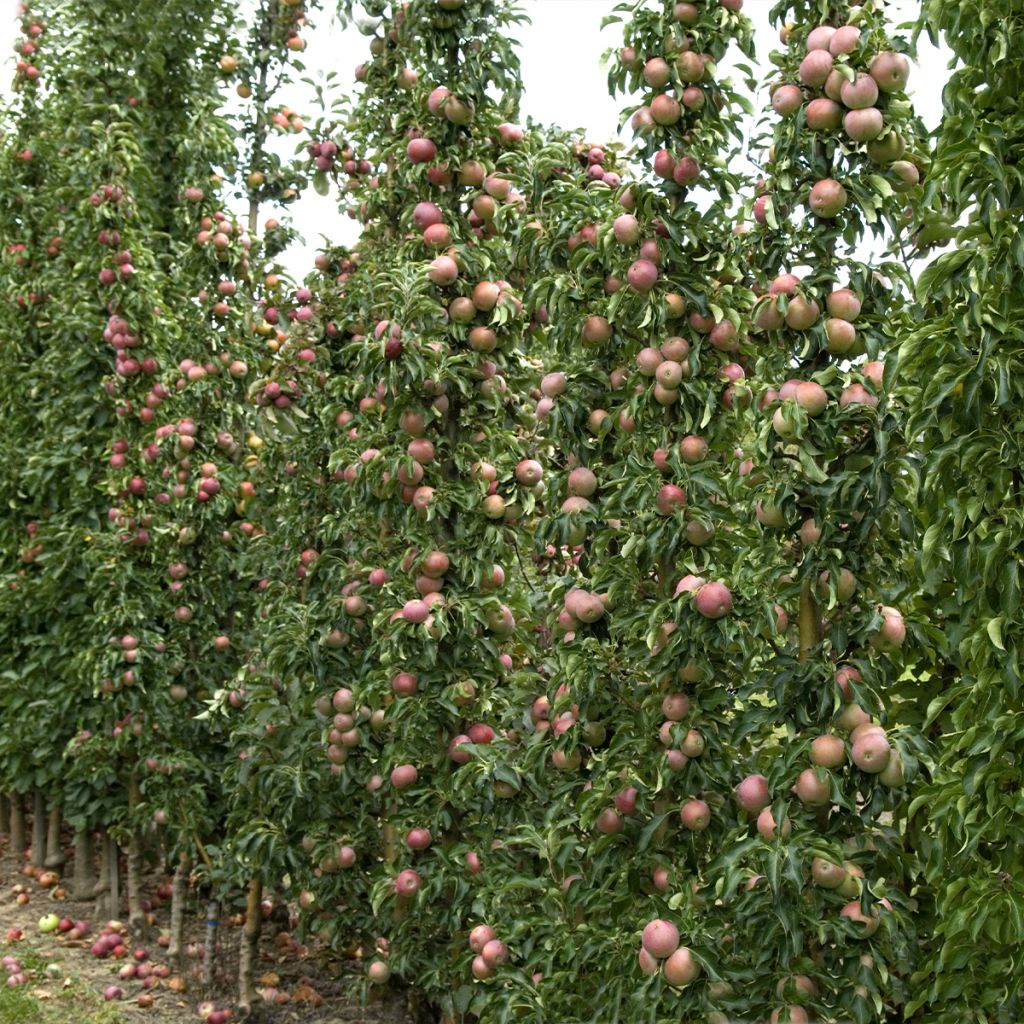

Columnar Apple Tree Azay-Le-Rideau - Malus domestica
Columnar Apple Tree Azay-Le-Rideau - Malus domestica
Malus domestica Azay-Le-Rideau® delwibo
Apple, Orchard apple, Table apple, Cultivated apple
This item cannot be shipped to the selected country
Delivery charge from €5.90
Oversize package delivery charge from €6.90
More information
Schedule delivery date,
and select date in basket
This plant carries a 6 months recovery warranty
More information
We guarantee the quality of our plants for a full growing cycle, and will replace at our expense any plant that fails to recover under normal climatic and planting conditions.
From €5.90 for pickup delivery and €6.90 for home delivery
Express home delivery from €8.90.
Oversize package: home delivery by special carrier from €6.90 per order..
Express home delivery from €8.90.

Description
The rapid fruiting of Malus domestica Azay-Le-Rideau delwibo allows for harvesting from the first few years. The columnar habit and elegant silhouette of this variety are well suited to gardens with limited space, container cultivation on balconies or terraces, or the creation of a small fruit hedge. It is a hardy variety with strong and regular production. The Azay-Le-Rideau apple is delicious, with a round shape and medium to large size, smooth skin, red on a bronze green background, with few visible lenticels at ripeness. Its crisp, white, firm flesh is very juicy, sweet, and aromatic. From late September the fruits can be consumed immediately after harvesting and can be stored until November. With a high sugar content, it is a very pleasant apple to bite into. Excellent in pies, compotes, or sautéed, the Azay-Le-Rideau apple is also highly regarded in savoury recipes. It is a partially self-fertile variety, productive, and highly resistant to scab and mildew.
Malus domestica, scientifically known as Malus communis or Malus pumila, is the Common or Domestic Apple Tree. It belongs to the Rosaceae family. Present in Europe since antiquity, it is a fruit tree native to the forests of Central Asia. It has excellent hardiness and is undoubtedly the most cultivated fruit tree in Northern Europe. There are approximately 20,000 varieties, including around 10,000 of American origin, 2,000 of English origin, and 2,000 of Chinese origin. Malus domestica Azay-Le-Rideau® 'delwibo' is a recent creation from the Georges Delbard nursery in France.
Elegant, the Azay-Le-Rideau Apple Tree is a small tree with a columnar and compact habit that reaches a height of 3 to 4 metres (10 to 13 feet) and a width of approximately 50 to 70cm (20 to 28in) at maturity. Its foliage consists of large, ovate leaves, greenish-brown on the upper side and whitish-green on the lower side, with deeply dentate margins. The white flowering occurs in April-May, which generally protects it from frost. The flowers are destroyed by temperatures below -2 to -3°C (28.4 to 26.6°F). The columnar Azay-Le-Rideau delwibo Apple Tree is a hardy plant that can withstand temperatures around -30°C (-22°F) and is suitable for cultivation in most regions. It is a partially self-fertile variety (diploid), but the presence of other apple tree varieties nearby will improve pollination and therefore production. Columnar Apple Tree varieties such as Amboise, Ballerina Polka, Ballerina Maypole, Ballerina Valse, Cheverny, Chenonceau, Chinon, Courson, Pomfital, Rhapsodie, Sonate, Vaux Le Vicomte, Versailles, and Villandry are suitable for cross-pollination. The Reine des Reinettes Apple Tree can also fulfill this function. Ornamental apple trees, such as Perpetu Evereste and John Downie, flower abundantly and can be excellent pollinators.
The Azay-Le-Rideau Apple Tree bears a homogeneous and abundant fruiting, which begins in late September and extends until October. The apple can be consumed both raw and cooked, in compotes, pastries, in combination with cheeses, or as an accompaniment to savoury dishes, such as with black pudding, pork, or in salads. Easy to eat, the apple provides a great feeling of satiety. Rich in carbohydrates and fructose, it is invigorating, energising, and rehydrating. Its content of vitamins A, B, C, and E, minerals, antioxidants, and fibre makes the apple a health asset. The fruits can be stored until November. Storage can be done in a cool, clean place, protected from light, at a temperature around 8 to 10°C (46.4 to 50°F) or in a cold room, airtight from outside air, at a temperature of 1 to 3°C (33.8 to 37.4°F). The apple releases ethylene, a gas that promotes fruit ripening. To accelerate the ripening of your other fruits or vegetables, place your apples next to them.
Very popular thanks to its fruit, the apple tree finds its place in the garden for the pleasure of young and old alike. Among a wide range of apple trees, it is easy to find the variety that best suits your tastes.
Report an error about the product description
Columnar Apple Tree Azay-Le-Rideau - Malus domestica in pictures
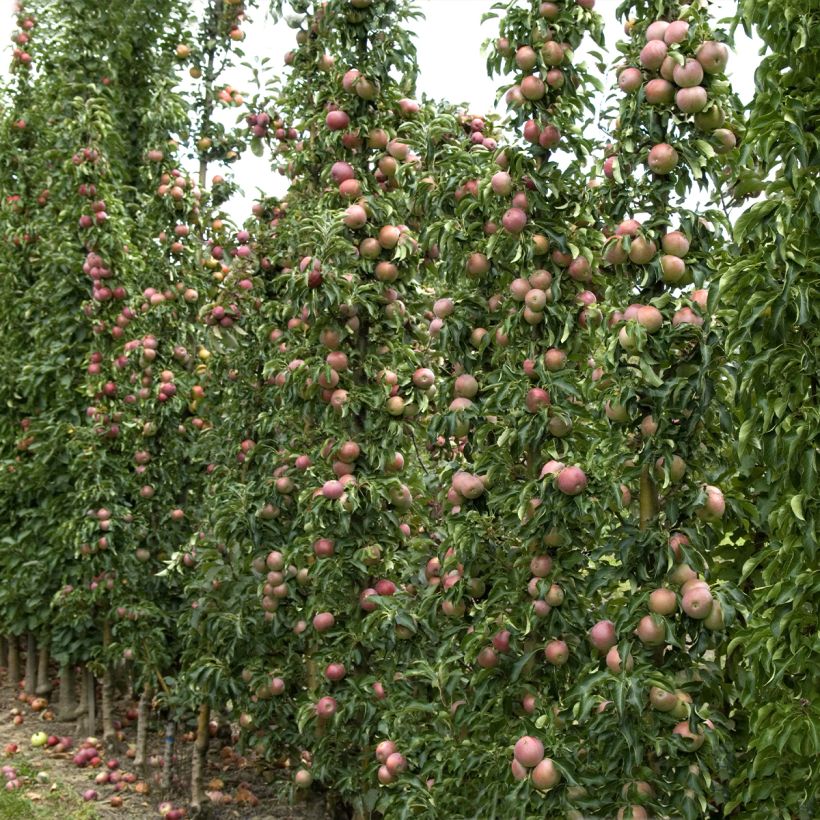

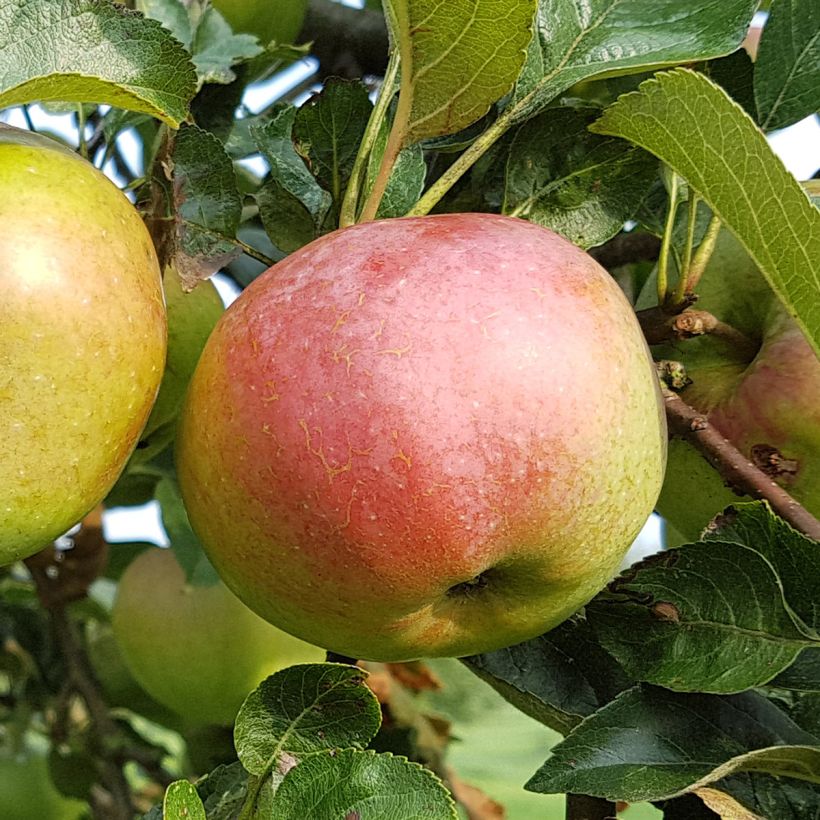

Plant habit
Fruit
Flowering
Foliage
Botanical data
Malus
domestica
Azay-Le-Rideau® delwibo
Rosaceae
Apple, Orchard apple, Table apple, Cultivated apple
Cultivar or hybrid
Other Apple trees
Planting and care
Choose a well-sunlit location for your Azay-Le-Rideau Columnar Apple Tree. The soil can be slightly alkaline or acidic, but not excessively. Dig a wide planting hole at least 3 times the volume of the root ball. Simultaneously add organic matter (topsoil, compost) and a base fertiliser such as crushed horn. Do not bury the graft point. Stake if necessary. Water abundantly, even in winter, and even if it's raining. Fruit trees are ideally planted between October and March, outside of freezing periods. Container-grown plants can be planted all year round except during periods of high heat or frost.
The advantage of columnar fruit trees is that they can be grown in outdoor pots. Choose a container at least 60L. Make sure the pot has drainage holes and create good drainage by filling the bottom with a thick layer of clay pellets or gravel. In pots, your trees will naturally require more regular watering. In winter, move your fruit trees to a sheltered place away from the wind and stop watering during frosty periods. Carry out surface dressing at least every two years, which involves replacing at least the topsoil with fresh soil, and fertilise before flowering, choosing a special fertiliser that is not too rich in nitrogen.
In winter you can add a small handful of wood ash, around the base of the tree and lightly incorporated into the surface of the soil - rich in potash, this will improve fruiting. Apple trees can be subject to various diseases and pests. In order to limit risks, space the trees sufficiently, and install multi-species hedges, nest boxes or insect hotels to attract beneficial insects. In summary: prioritise biodiversity. The main diseases of the Apple tree are scab (brown spots on the leaves), brown rot (wilting of flowers and rotting of fruits on the tree) and powdery mildew (white powdery coating on the leaves). For these three cases preventive action is preferred by spraying a decoction of horsetail, or as a last resort and in case of severe attacks, a treatment based on Bordeaux mixture can be applied. As for pests, the codling moth (or fruit worm) is a small caterpillar, resulting from the egg laying of a butterfly, that causes tunnels inside the fruit. To remedy this, it is preferable to act preventively by promoting the installation of tits and bats through the placement of nest boxes. In case of aphid infestation, spray a solution based on black soap.
During the harvest in September, only keep the picked fruits. For good storage, it is advisable to place the apple with its stem downwards, on racks or in crates. Choose a preferably completely dark, dry, and cool place, but frost-free.
Planting period
Intended location
Care
-
, onOrder confirmed
Reply from on Promesse de fleurs
Fruit trees for small gardens
Haven't found what you were looking for?
Hardiness is the lowest winter temperature a plant can endure without suffering serious damage or even dying. However, hardiness is affected by location (a sheltered area, such as a patio), protection (winter cover) and soil type (hardiness is improved by well-drained soil).

Photo Sharing Terms & Conditions
In order to encourage gardeners to interact and share their experiences, Promesse de fleurs offers various media enabling content to be uploaded onto its Site - in particular via the ‘Photo sharing’ module.
The User agrees to refrain from:
- Posting any content that is illegal, prejudicial, insulting, racist, inciteful to hatred, revisionist, contrary to public decency, that infringes on privacy or on the privacy rights of third parties, in particular the publicity rights of persons and goods, intellectual property rights, or the right to privacy.
- Submitting content on behalf of a third party;
- Impersonate the identity of a third party and/or publish any personal information about a third party;
In general, the User undertakes to refrain from any unethical behaviour.
All Content (in particular text, comments, files, images, photos, videos, creative works, etc.), which may be subject to property or intellectual property rights, image or other private rights, shall remain the property of the User, subject to the limited rights granted by the terms of the licence granted by Promesse de fleurs as stated below. Users are at liberty to publish or not to publish such Content on the Site, notably via the ‘Photo Sharing’ facility, and accept that this Content shall be made public and freely accessible, notably on the Internet.
Users further acknowledge, undertake to have ,and guarantee that they hold all necessary rights and permissions to publish such material on the Site, in particular with regard to the legislation in force pertaining to any privacy, property, intellectual property, image, or contractual rights, or rights of any other nature. By publishing such Content on the Site, Users acknowledge accepting full liability as publishers of the Content within the meaning of the law, and grant Promesse de fleurs, free of charge, an inclusive, worldwide licence for the said Content for the entire duration of its publication, including all reproduction, representation, up/downloading, displaying, performing, transmission, and storage rights.
Users also grant permission for their name to be linked to the Content and accept that this link may not always be made available.
By engaging in posting material, Users consent to their Content becoming automatically accessible on the Internet, in particular on other sites and/or blogs and/or web pages of the Promesse de fleurs site, including in particular social pages and the Promesse de fleurs catalogue.
Users may secure the removal of entrusted content free of charge by issuing a simple request via our contact form.
The flowering period indicated on our website applies to countries and regions located in USDA zone 8 (France, the United Kingdom, Ireland, the Netherlands, etc.)
It will vary according to where you live:
- In zones 9 to 10 (Italy, Spain, Greece, etc.), flowering will occur about 2 to 4 weeks earlier.
- In zones 6 to 7 (Germany, Poland, Slovenia, and lower mountainous regions), flowering will be delayed by 2 to 3 weeks.
- In zone 5 (Central Europe, Scandinavia), blooming will be delayed by 3 to 5 weeks.
In temperate climates, pruning of spring-flowering shrubs (forsythia, spireas, etc.) should be done just after flowering.
Pruning of summer-flowering shrubs (Indian Lilac, Perovskia, etc.) can be done in winter or spring.
In cold regions as well as with frost-sensitive plants, avoid pruning too early when severe frosts may still occur.
The planting period indicated on our website applies to countries and regions located in USDA zone 8 (France, United Kingdom, Ireland, Netherlands).
It will vary according to where you live:
- In Mediterranean zones (Marseille, Madrid, Milan, etc.), autumn and winter are the best planting periods.
- In continental zones (Strasbourg, Munich, Vienna, etc.), delay planting by 2 to 3 weeks in spring and bring it forward by 2 to 4 weeks in autumn.
- In mountainous regions (the Alps, Pyrenees, Carpathians, etc.), it is best to plant in late spring (May-June) or late summer (August-September).
The harvesting period indicated on our website applies to countries and regions in USDA zone 8 (France, England, Ireland, the Netherlands).
In colder areas (Scandinavia, Poland, Austria...) fruit and vegetable harvests are likely to be delayed by 3-4 weeks.
In warmer areas (Italy, Spain, Greece, etc.), harvesting will probably take place earlier, depending on weather conditions.
The sowing periods indicated on our website apply to countries and regions within USDA Zone 8 (France, UK, Ireland, Netherlands).
In colder areas (Scandinavia, Poland, Austria...), delay any outdoor sowing by 3-4 weeks, or sow under glass.
In warmer climes (Italy, Spain, Greece, etc.), bring outdoor sowing forward by a few weeks.

































